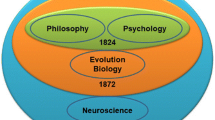Abstract
Computer games are now a part of our modern culture. However, certain categories of people are excluded from this form of entertainment and social interaction because they are unable to use the interface of the games. The reason for this can be deficits in motor control, vision or hearing. By using automatic speech recognition systems (ASR), voice driven commands can be used to control the game, which can thus open up the possibility for people with motor system difficulty to be included in game communities. This paper aims at find a standard way of using voice commands in games which uses a speech recognition system in the backend, and that can be universally applied for designing inclusive games. Present speech recognition systems however, do not support emotions, attitudes, tones etc. This is a drawback because such expressions can be vital for gaming. Taking multiple types of existing genres of games into account and analyzing their voice command requirements, a general ASRS module is proposed which can work as a common platform for designing inclusive games. A fuzzy logic controller proposed then is to enhance the system. The standard voice driven module can be based on algorithm or fuzzy controller which can be used to design software plug-ins or can be included in microchip. It then can be integrated with the game engines; creating the possibility of voice driven universal access for controlling games.









Similar content being viewed by others
References
Carbonell N (2003) Multimodality: a step towards universal access. Universal Access in the Information Society 2(2):89–90
Clarkson J, Coleman R, Keates S, Lebbon, C (eds.) (2003) Inclusive design: design for the whole population, pp 88–102
Crawford,C (1982) The art of computer game design
Czaja S, Lee C (2007) The impact of aging on access to technology. Universal Access in the Information Society 5(4):341–349
Eddy SR (1996) Hidden Markov models. Current Opinion in Structural Biology 6(3):361–365
Eurostat, Eurostat, Internet usage in the EU25 in 2005. 2006.
Goodman J, Langdon PM, Clarkson PJ (2006) Equipping designers for inclusive design. Gerontechnology 4:229–233
Goodman-Deane J, Keith S, Whitney G (2009) HCI and the older population. Universal Access in the Information Society 8(1):1–3
Hawthorn D (2000) Possible implications of aging for interface designers. Interact Comput 12(5):507–528
Hinckley K (2003) Input technologies and techniques. Lawrence Erlbaum
Holzinger A (2008) Universal access to technology-enhanced learning. Universal Access in the Information Society 7(4):195–197
http://farfromneutral.com/kaizen/center-of-gravity-method/comment-page-1/
http://www.doc.ic.ac.uk/~nd/surprise_96/journal/vol2/jp6/article2.html
Langdon P, Clarkson J, Robinson P (2007) Designing accessible technology. Universal Access in the Information Society 6(2):117–118
Neerincx M et al (2009) Attuning speech-enabled interfaces to user and context for inclusive design: technology, methodology and practice. Universal Access in the Information Society 8(2):109–122
Picard RW (1997) Affective computing. MIT, Cambridge
van Leeuwen DA, Martin AF, Przybocki MA, Bouten JS (2006) NIST and TNO-NFI evaluations of automatic speaker recognition, Computer. Speech Language 20:128–158
Van Wijngaarden SJ, Smeele PMT, Steeneken HJM (2001) A new method for testing communication efficiency and user acceptability of speech communication channels. Proceedings of Eurospeech 2001, Aalborg, September pp 1675–1678
Ying H (1993) The simplest fuzzy controllers using different inference methods are different nonlinear proportional-integral controllers with variable gains. Automatica 29(6):1579–1589
Author information
Authors and Affiliations
Corresponding author
Rights and permissions
About this article
Cite this article
Mustaquim, M.M. Automatic speech recognition- an approach for designing inclusive games. Multimed Tools Appl 66, 131–146 (2013). https://doi.org/10.1007/s11042-011-0918-7
Published:
Issue Date:
DOI: https://doi.org/10.1007/s11042-011-0918-7




